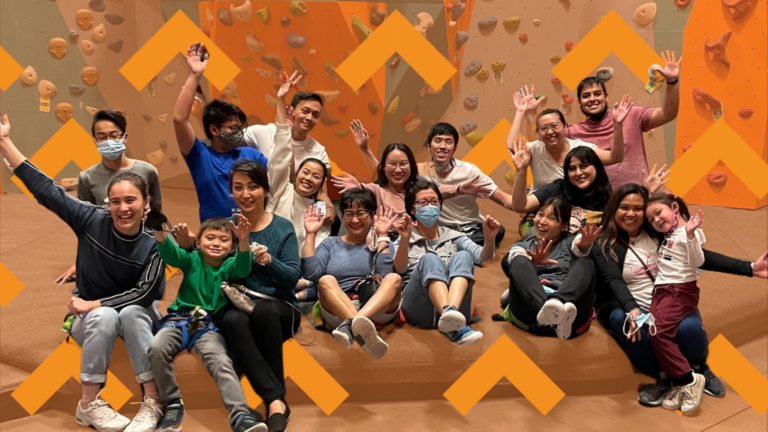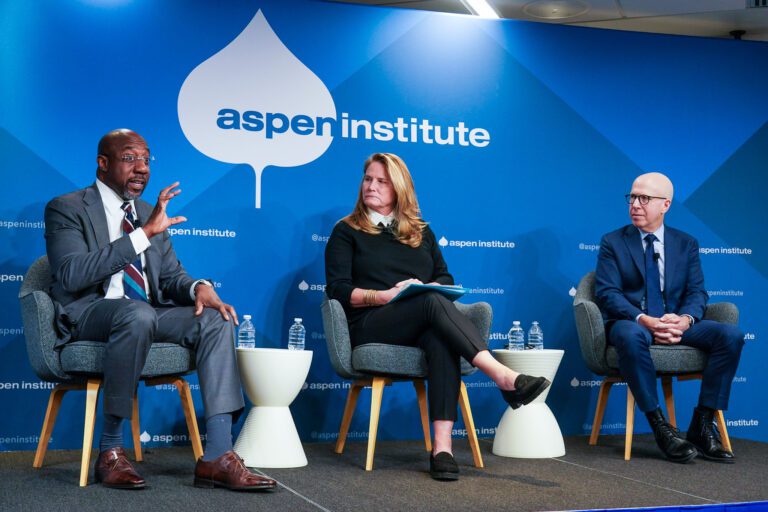Moving from the Margins to Mainstream
Lessons and Innovations from the 2Gen Field

In the United States, the pediatric setting is the only universally accessed health system for families and a tremendous opportunity to incorporate two-generation strategies.96 percent of families take their children to the pediatrician, often multiple times a year for well check visits before the age of two. From employing literacy-based approaches to co-locating parent and child services, innovative thinkers have begun to better integrate two generation approaches into the pediatrician’s office and reimagine the well-child visit.
“Primary care is an underused platform to find out what’s going on in families, to think about prevention, and to provide services in a non-stigmatized environment,” says Rahil Briggs of the Montefiore Medical Group. “If you extend from pediatric well checks into caring for parents, you have a powerful two generation platform where mom’s going anyway and gets her own services, including mental health.“
Reinventing the well child visit for the whole family is no easy task. Pediatricians typically dedicate only 15 minutes to these child-centered visits, and they’re tasked with an enormous list of responsibilities ranging from vaccines to discussing growth to providing anticipatory guidance about what comes next. Training pediatricians how to set down the checklist and simply observe is a vital and time-saving tool. Dr. Dipesh Navsaria, of the University of Wisconsin’s School of Medicine and Public Health, asks medical students to look at the broader family picture when they walk into the room, such as where the family is positioned, how they are interacting, and even what happens when you hand a child a book.
“We walk into a well child visit with a book and give it to the child and watch what happens,” says Navsaria. “If the 4 year old jumps down, grabs book, and says, ‘I love that book,’ I’ve just seen language, gross motor skills, fine motor skills, and I know they’re being read to at home. That’s my developmental surveillance right there, and it took 6 seconds. It makes my time more efficient. “
Changing the paradigm in the doctor’s office from what’s healthy development to what leads to healthy development can head off major issues before they arise as well. “Only a small percentage of families really need intensive services,” says Briggs. “I tell my doctors that we’re not looking for red flags in children and families. We’re looking for light pink flags. What’s predictable is preventable. If you can get in early, you can get away from some of those five year searching–for–diagnosis situations.“
“Only a small percentage of families really need intensive services,” says Briggs. “I tell my doctors that we’re not looking for red flags in children and families. We’re looking for light pink flags. What’s predictable is preventable. If you can get in early, you can get away from some of those five year searching–for–diagnosis situations.“
Changing the role of the pediatrician from catch-all to first line of defense is critical as well. Briggs‘s office co-locates services like mental health and nutrition.
“We need to think smart about what we ask pediatricians to do and then partner to fill in behind that. The power of the warm hand-off can not be overstated,” Briggs says. “There’s something profoundly different about saying, go call that mental health number versus saying, ‘I’m so glad you brought that up, let me see if the other doctor who’s an expert is available now.’ With integrated systems, we all get to play our positions. Pediatricians get back to providing pediatric care. All our doctors now say they would never practice without this after having it.“
Integrating services and modalities into the pediatric setting requires changing mindsets in the broader medical community. Organizations hoping to make inroads into a pediatrician’s office first need to find pediatricians who are open to the idea of incorporating two generation approaches and who understand the language.
“You want a champion who exists in the system, has some power, will be your voice in that system, and understands the impact of the two generation approach,” says Briggs. Talking to state chapters of the American Academy of Pediatrics can help organizations pinpoint doctors to partner with. The Affordable Care Act also offers potential avenues to explore. Hospitals are expected to show community involvement, and there’s also funding available for telehealth, patient-centered medical homes, home visiting funds, and case management funds that provide money for wraparound services. They key to building relationships with the medical community, however, is by framing the potential benefits of the two generation approach in ways that show an understanding for the pediatrician’s needs and perspectives.
 “You’ll be more successful if you align what you want to do with something that doctors are already expected to do,” says Briggs. “The more you can show how you can help them get to that place they already wanted to go, the better chance of building a partnership. Drop your ego at the door, and present how it’s what they’re trying to do anyway and you’ll be their partners. That gets you so much further. And then behind the scenes you work on those other questions.“
“You’ll be more successful if you align what you want to do with something that doctors are already expected to do,” says Briggs. “The more you can show how you can help them get to that place they already wanted to go, the better chance of building a partnership. Drop your ego at the door, and present how it’s what they’re trying to do anyway and you’ll be their partners. That gets you so much further. And then behind the scenes you work on those other questions.“
Navsaria recommends using the American Academy of Pediatrics’ Bright Futures Guidelines bible for ideas on how to make those connections.
In the end, one of the biggest roles pediatricians can play is in helping families to see what they’re doing right.
“For the families we see, a lot of people are telling them what they’re doing wrong,” says Perri Klass, M.D., of Reach Out and Read. “One of the universal things we need is the chance to recognize that this is a hard job and we’re all trying to do our best. The pediatrician’s office is the only place where they’re being seen again and again, but maybe it’s also the only chance we have to say as clearly as possible that they’re doing something right as well.”
Photos by Dan Bayer, the Aspen Institute
See others in the series:
Report which informed the blog post: The Elephant in the Clinic: Early Literacy and Family Well-Being, Dipesh Navsaria, University of Wisconsin School of Medicine and Public Health
Related Posts



